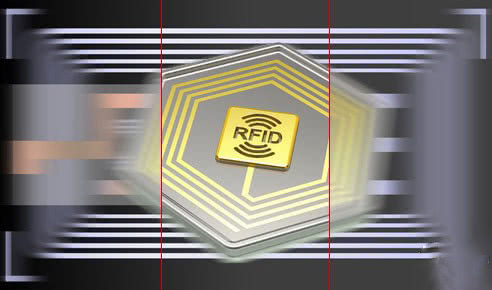|
The OP
Published on 2020-1-11 13:53
Only look at the author
This post is from RF/Wirelessly
| ||
|
|
||
- 【Posts】The difference and connection between active and passive RFID
- 【Posts】The difference between active crystal oscillators and passive crystal oscillators
- 【Posts】Knowledge Popularization: Understand the difference between active crystal oscillators and passive crystal oscillators in one article
- 【Posts】The difference and usage of passive crystal and active crystal oscillator
- 【Posts】Several questions about common source amplifier circuits.
- 【Posts】We often use MOS with different packages, so I would like to ask what is the difference between MOS with DPAK and D2PAK packages?
- 【Posts】Active clamp LM5026 technical help!!
- 【Posts】Passive buzzer driver
- 【Download】The difference between active crystal oscillators and passive crystal oscillators
- 【Download】The difference between passive crystal and active crystal
- 【Download】The difference between active speakers and passive speakers
- 【Download】The difference between active and passive devices
- 【Download】100,000 Whys of Hardware (Passive Components) (Zhu Xiaoming)
- 【Download】Passive filter components - Introduction and in-depth understanding of capacitors (Huawei internal information)
- 【Download】Principle and Application of Passive Power Factor Correction Circuit
- 【Download】Common passive crystal oscillator package dimensions and physical pictures
- 【Design】WeChat applet + Alibaba IoT platform + Hezhou Air724UG serverless IoT system
- 【Design】DI-130 - Passive PFC LED lighting power supply
- 【Design】Passive NFC ink screen driver board
- 【Design】#the4thLichuangcompetition# Passive micro-power dynamic AC current detection PLC signal acquisition, protection and linkage control
- 【Design】Based on LM324 passive electronic load
- 【Design】Passive buzzer minimum module (low level trigger)
- 【Circuits】Voltage-controlled voltage source second-order active low-pass filter circuit
- 【Circuits】Passive power failure alarm
- 【Circuits】Homemade passive adjustable constant voltage electronic load
- 【Circuits】Passive tone control circuit diagram introduction
- 【Circuits】Passive bass and treble control circuit
- 【Circuits】Three-phase passive inverter circuit diagram
- 【Articles】Use low-power RF chips and ultra-low-power MCUs to build active and passive RFID
- 【Articles】The difference between passive electronic crossover and active electronic crossover
- 【Articles】Oscilloscope current probes can be divided into two categories: passive and active. What is the difference between them?
- 【Articles】What are the differences between passive probes and active probes?
- 【Articles】The difference between passive probes and active probes
- 【Articles】Basic knowledge of electronics: the difference between active and passive crystal oscillators
-
The difference and usage of passive crystal and active crystal oscillator
Thedifferenceandusageofpassivecrystalandactivecrystaloscillator:ThiscontentisoriginallycreatedbyEEWORLDforumuserzkj2014.Ifyouneedtoreprintoruseitforcommercialpurposes,youmustobtaintheauthor'sconsentandindicatethesource1Passivecrystalsdonoth ...
-
Analysis and Application of Active and Passive Signals in PLC System
1.Passivesignalsandactivesignals(analogquantities)(1)DefinitionofpassivesignalsandactivesignalsForcurrentsignals,ifthedevicehasanindependentworkingpowerline,thesignaloutput(suchas4-20mA)itprovidesisanactivesignal;ifthedeviceitselfdoesnothav ...
-
[Review of "Artificial Intelligence Practical Tutorial"] Python Function
#【《ArtificialIntelligencePracticeTutorial》Evaluation】PythonFunction##FunctionIfablockofcodeisneededmultipletimeswhendevelopingaprogram,butinordertoimprovetheefficiencyofwritingandthereuseofcode,thecodeblockswithindependentfunctionsareor ...
- Help! My newly bought power bank is broken!
- I have a question about the network port circuit?
- [Synopsys IP Resources] Using the ARC SEM130FS processor to meet the safety protection requirements of new automotive SOCs
- Angular position detection system based on AD2S83 and its application in electric power steering system
- 【MicroPython】Using MCO as a clock
- Good news! Owning an ultra-high performance UXR series oscilloscope is no longer a dream!
- Gallium Nitride—Not Just for Defense Anymore
EEWorld Datasheet Technical Support
-
"Cross-chip" quantum entanglement helps build more powerful quantum computing capabilities
IBM scientists have achieved "cross-chip" quantum entanglement - successfully entangled two "Eagl
-
Ultrasound patch can continuously and noninvasively monitor blood pressure
A research team at the University of California, San Diego, has developed an innovative wearable
-
Europe's three largest chip giants re-examine their supply chains
At the Electronica 2024 CEO Roundtable held just last week, the CEOs of three chip giants, Infine
- It is reported that Kioxia will be approved for listing as early as tomorrow, and its market value is expected to reach 750 billion yen
- The US government finalizes a $1.5 billion CHIPS Act subsidy to GlobalFoundries to support the latter's expansion of production capacity in the US
- SK Hynix announces mass production of the world's highest 321-layer 1Tb TLC 4D NAND flash memory, plans to ship it in the first half of 2025
- UWB is a new way to use it in cars. Can wireless BMS also use it?
- Filling the domestic gap! China Mobile, Huawei and others jointly released the first GSE DPU chip
- Samsung Electronics NRD-K Semiconductor R&D Complex to import ASML High NA EUV lithography equipment
- Apple reveals the secret of its own chip success: competitors can't use the latest cutting-edge technology
- Problems with STM32 and passive buzzer playing sound
- Embedded Tutorial_DSP Technology_DSP Experiment Box Operation Tutorial: 2-28 Building a Lightweight WEB Server Experiment
- OPA847IDBVR op amp domestic replacement
- AG32VF407 Test UART
- [Digi-Key Follow Me Issue 2] Chapter 1: Sharing on receiving the goods
- What model is this infrared receiver? Which model can be used instead? Thank you
- Selling brand new unopened ZYNQ 7Z020 FPGA core board
- The LORA module used in the lithium battery-powered water meter setting can save energy when 100 water meters are installed in one corridor.
- I would like to ask, when a port is set to RX0, is it necessary to set the input and output direction of this port?
- Why is this year so difficult? It’s even more difficult than during the pandemic. I’m 30 and facing unemployment. I’m so confused.
- Ask about the voltage regulator test question
- [Xiaohua HC32F448 Review] About Xiaohua Semiconductor's UART interrupt sending and PRINTF construction and redirection
- 【BIGTREETECH PI development board】 HDMI output test
- 【BIGTREETECH PI development board】+08. Audio test (zmj)
- [Xiaohua HC32F448 Review] +RTC electronic clock




 提升卡
提升卡 变色卡
变色卡 千斤顶
千斤顶